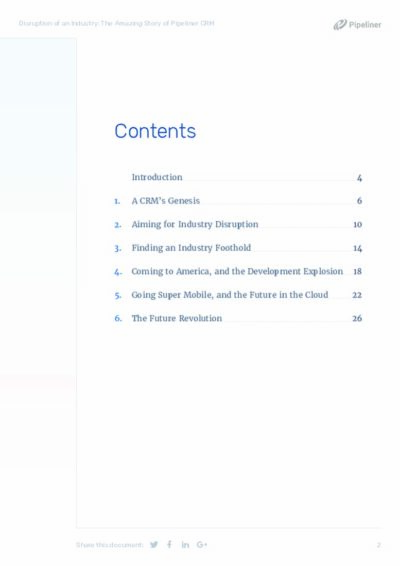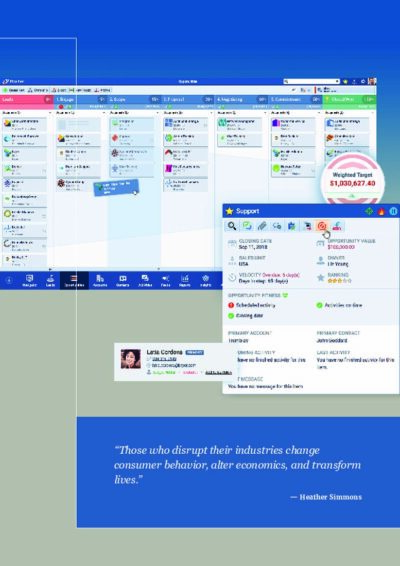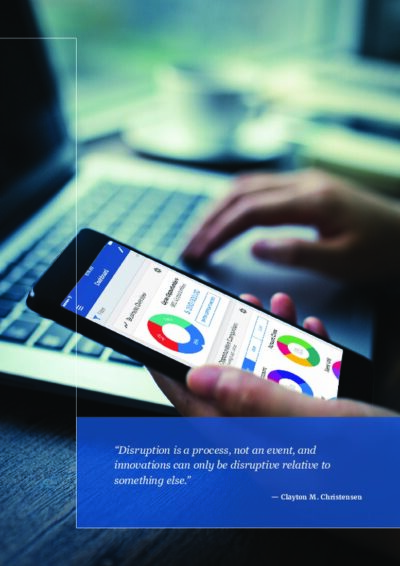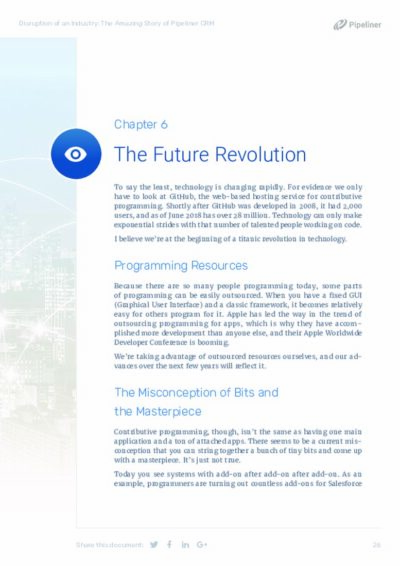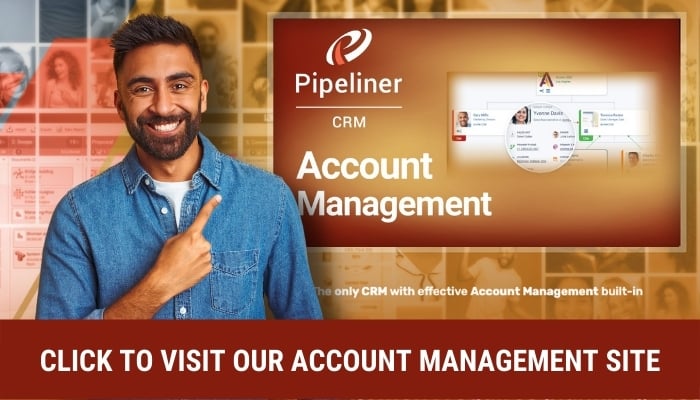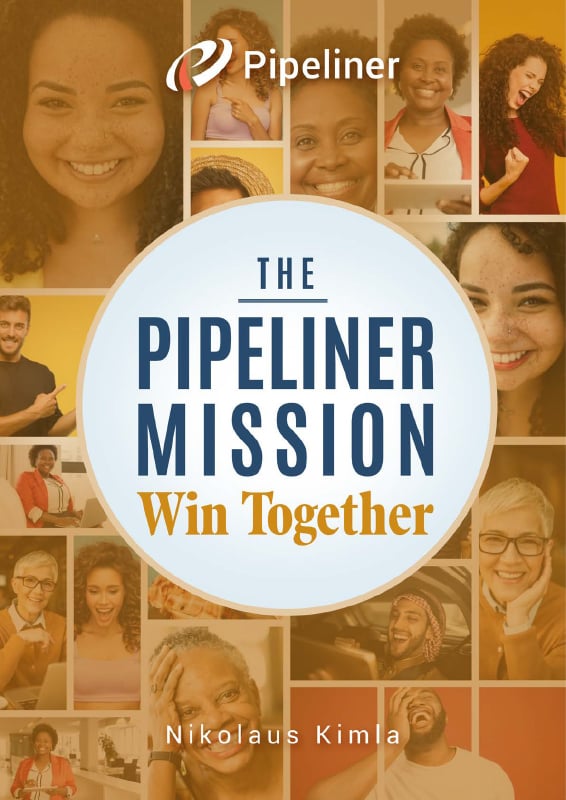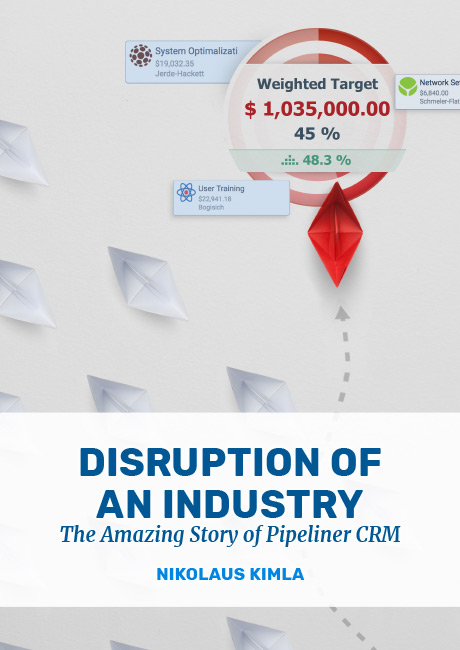
Disruption of an Industry
The Amazing Story of Pipeliner CRM
Pipeliner is a CRM (CustomerCustomer Customer is an individual or an organization that purchases a product or signs up for a service offered by a business. Relationship Management) productProduct Product refers to anything (an idea, item, service, process or information) that meets a need or a desire and is offered to a market, usually but not always at a price. of which Founder and CEO, Nikolaus Kimla, is extremely proud of. It was and is the first CRM product developed to actually empower salespeople—prior to Pipeliner, a CRM was intended to control salespeople (and in many cases still is). Pipeliner is a true sales enablementSales Enablement Sales Enablement is a strategic process that provides a company’s sales professionals with tools, technology, training and other resources that improve their performance at customer engagement and at generating value for all stakeholders in the sales process. tool.
How Pipeliner got there makes for an interesting story, and hopefully, anyone setting out to develop and market a software product can learn from Pipeliner’s own successful experience.
Chapter 1: A CRM’s Genesis
World-Check was a huge success, but when it was sold we no longer had the intellectual property of it. At that point we thought, “What next?”
At this time, by total coincidence, Kimla was invited to an international conference put on by IBM on the subject of sales pipelineSales Pipeline Sales Pipeline is a type of visualization showing the status of each sales prospect in the customer life cycle or sales process. management. The idea had been evolved over many years and was very logical, so he was quite drawn to it.
After the conference, Kimla discovered that there was no product behind the concept, either existing or in the planning stages. So he came back to his team, and we thoroughly discussed the idea of a sales pipeline software solutionSolution Solution is a combination of ideas, strategies, processes, technologies and services that effectively helps an organization achieve its goals or hurdle its challenges.. They decided to move cautiously ahead.
Chapter 2: Aiming for Industry Disruption
While developing Pipeliner CRM, Kimla and his team took a hard look at the answers to this question: what was the difference between Pipeliner and other CRMs? What would be the revolutionary approach? The answers were right there in , their initial research—they simply followed them.
At the time of Pipeliner’s initial development, CRM administration was a full-time job—often requiring more than one person in a larger company. Additionally, this administration required substantial training.
One of the goals for Pipeliner was to make onboardingOnboarding Onboarding is the process or act of introducing a new customer to your product or service; or integrating a newly hired employee into your workforce or team. and implementation something companies could do themselves, without requiring weeks of specialized training. Today, learning Pipeliner onboarding takes a few hours. Pipeliner aimed to do the same thing for administration; today Pipeliner administration is a very part-time job that can be performed by existing staff with a few hours instruction.
Chapter 3: Finding an Industry Foothold
The original company in which Pipeliner was created was an Austrian enterpriseEnterprise Enterprise (in the context of sales) is a relatively large organization typically composed of multiple levels, locations, and departments which need multi-layer software systems that support collaboration across a large corporate environment. integration company doing quite well. They had a lot of success and knowledge—but weren’t a vendor.
When Kimla realized that he had, in Pipeliner, the beginnings of a real scalable product and not a service, he had to think through what to do. Kimla didn’t believe he could compete against the CRM giants like Microsoft, Oracle, and Salesforce.
It didn’t make sense to for Kimla to try and build a big vendor organizationOrganization Organization is a cohesive group of people working together and formally bound by a shared identity (e.g., one team, company, club, etc.) and a common purpose (e.g., business growth, athletic victory, etc.).. Kimla says, “Americans may not fully understand this, but it really has to do with the mindset: Austria is a small country, and I wasn’t thinking that I had a product that could bring in billions in revenueRevenue Revenue is the amount of money a business generates during a specific period such as a year or a quarter; also called sales.. How could I get this product to market?”
Chapter 4: Coming to America, and the Development Explosion
At the time Kimla actually considered that the future world markets were in Asia, just based on growth. In the end, though, he decided to bring the company headquarters to America; if a product is released in the U.S., Asia will buy it, too. The same is true of Australia.
It wasn’t easy to pull up stakes and move, but that’s what he did. The whole story of this move is detailed in another ebook called Building a Business.
Chapter 5: Going Super Mobile, and the Future in the Cloud
When Pipeliner had gained hundreds of customers around the world with a very stable product, Kimla realized they needed a true mobile application. Pipeliner did have a mobile version, but they knew that if they were really going to be robust, they had to be native on iOS and Android.
Pipeliner’s native mobile CRM was released in 2016, and today reviewers are saying that they have the best and most advanced mobile CRM on the market. As with Pipeliner’s desktop version, they are constantly improving it— since its release Pipeliner has had an update almost every two months.
Mobile features now include innovations such as business card scanner, text-to-speech, auto-populating of dataData Data is a set of quantitative and qualitative facts that can be used as reference or inputs for computations, analyses, descriptions, predictions, reasoning and planning., total visualization of data, integration of calendar and email, customized fields, and much more.
Chapter 6: The Future Revolution
To say the least, technology is changing rapidly. For evidence we only have to look at GitHub, the web-based hosting service for contributive programming. Shortly after GitHub was developed in 2008, it had 2,000 users, and as of June 2018 has over 28 million. Technology can only make exponential strides with that number of talented people working on code.
Kimla believes we’re at the beginning of a titanic revolution in technology.
Learn More About Pipeliner CRM
Take a no-obligation 14 day trial of Pipeliner CRM.
No credit card info required – just experience for yourself how it could impact your sales.
Additional Resources
This ebook is on the subject of “Win Together.” It falls under the same context as“win-to-win” described in my book Network Selling: Guarantee Success for the Digital Age. Today, this aspect of sales is more important than ever, and must also be part and parcel of CRM solutions.
“For some years I’ve been saying that, as a society, we’re in the midst of a transformation. Given what’s happened in the last couple of years, there’s no one left who is disagreeing with me! It’s become very obvious.”
 Nikolaus Kimla, CEO at Pipelinersales, Inc.
Nikolaus Kimla, CEO at Pipelinersales, Inc.A common term in sales today is EQ, which stands for “emotional I.Q.” It means the skill a salesperson has in reading emotions and utilizing them in sales. It means empathy and a number of other abilities. The short version is, it’s an I.Q. when it comes to emotions. But just as with our Network Selling model, E.Q. isn’t just for sales, either. It’s actually the missing factor in human interactions, for confrontation—a common “tool” in human interactions—doesn’t actually handle anything.
“You can have everything in life you want if you will just help enough other people get what they want.”
 Zig Ziglar
Zig Ziglar
